|
|
||||||||||
|
|

History of Insect Parasitic Nematodes
This document was constructed and is maintained by KHUONG B. NGUYEN
Entomology and Nematology
Department
University of Florida





This
document was prepared for students in the course "Insect Parasitic
Nematodes"
Entomology & Nematology Department,
University of Florida
It was reported that entomophilic (entos = insect, philos = like) nematodes were found in about 27 families of 8 orders, namely Rhabditida, Tylenchida, Aphelenchida, Strongylida, Oxyurida, Ascaridida, Spirurida,, and Mermithida.
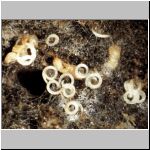
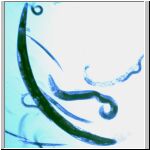
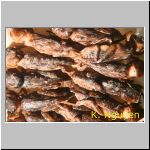
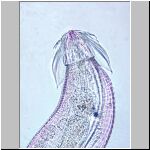
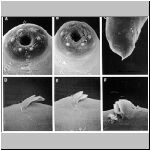
Neosteinernema
Adults
and juveniles of Mole
crickets parasitized Pulchrocephala sp. Face
view, tail and epiptigm
parasite of termite
Steinernema
by Steinernema scapterisci found in mole crickets
of Steinernema females
History
- Aldrovandus found dead grasshoppers with worms emerging from
their bodies (in De Animalibus Insectis 1623). He was the one who first
used the word Vermes.
- Lister (1672) described similar worms from a plant in his garden and
compared his findings to that of Aldrovandus.
- Reaumur (1742) described a worm that was undoubtedly Sphaerularia
bombi Dufour.
- Gould (1747) graphically described the emergence of worms, probably
mermithids, from ants.
- Carl von Linnaeus (1707-1778), in his Systema Naturae, listed eight
genera in the Vermes Intestini (1758). Two of these were truly parasitic
worms, and the name of the third, Gordius, is associated with Linnaeus.
- A Lutheran pastor, J.A.E. Goeze (1731-1793), was the first to study
nematodes seriously under the microscope and described the vinegar eelworm
(1782). He began to distinguish between the various kinds of worms.
He also described the emergence of mermithids from soil following a heavy rain
(1782).
- Rudolphi(1771-1832).
Rudolphi (1819) included 350 species belonging to 11 genera in his works
Entozoorum Synopsis. He also gave us the scientific name, Nematoidea.
- Siebold(1804-1885)
studies introduced the concept of a life cycle involving different kinds of
hosts, with different ways of penetration. With studies of Charvet
(1834), Berthold (1843), and Dujardin (1842)], Siebold
established the Gordiacea (in 1843), he included mermithids in the group.
Under the title "Ueber die Fadenwürmer der Insekten" in six works
(1842-1858), von Siebold described and noted 233 nematode species from insects.
- Leuckart (1822-1898) clarified Linnaeus' groups and established Vermes
on a firm basis akin to that which we use today (Fig. 3). Rudolphi
(1809), with true perspicacity, recognized Nematoidea as separate from
Acanthocephalea, Trematodea, and Cestoidea, but Leuckart (1887) established
them as separate groups.
- Hope (1839) wrote "The genera and species of insects
infected by filariae" and complicated an already complex puzzle concerning
the identity of filariids, mermithids, and gordiids.
- Bremser (1824), in his "New Atlas of Intestinal Worms"
recorded Leblond's discussion of the finding of Audouin of mermithid worms in
cockchafers in France. Another French worker, Dujardin
(1801-1860), was also a pioneer in the study of nematodes in insects in
France. He described Mermis nigrescens in 1842 and Mermis
aquatilis in 1845.
- In Scotland in 1861, Sir John Bulloch described a worm that was
obviously Sphaerularia bombi. In 1853, Meissner
(1829-1905) described Mermis albicans in detail.
- In 1851, Karl Diesing (1800-1867) published Systema Helminthum, with
175 insect nematode records and involving five entomophilic genera. He
listed 118 species of Gordius, 17 of Mermis, including M.
nigrescens and M. albicans and Sphaerularia bombi as
members of the same suborder and tribe. Not surprisingly, he considered Sphaerularia
as a genus inquirendum. He assigned twelve species to Anguillula,
nine of which had been assigned to Oxyuris spp., and found in intestines
of insects. Diesing recognized two genera, Gordius and Mermis,
but kept them in the same suborder and tribe. It remained for Vejdovsky (1886) to
separate Nematoda and Nematomorpha .
- Braun in 1883 defined the Mermithidae, a definition that still stands.
- Linstow (1842-1916), in Berlin, initiated a series of papers that extended
from 1860 to 1914. The admirable practice of naming
new genera by the use of a new prefix
with -mermis originated with von Linstow and was first used in establishing the
name Paramermis in 1898. In 1878 , he published a
Compendium der Helminthologie, which lists several entomophilic nematodes.
- Schneider (1831-1890) provided one of the first classifications
of nematodes (1866). He accepted only M. nigrescens and named a
new species M. lacinulata. He separated Mermis from Gordius,
but left Sphaerularia bombi with Gordius in the same
group. In the same monograph, he reveals his curiosity about S. bombi
by including a chapter on its development.
- Late in the nineteenth century, three Russian researchers, Fedchenko
(1874, 1886), Keppen (1870, 1881, 1882), and Radkevitch (1869),
gave us information on the entomophilic nematode fauna of that vast
country. They created a tradition that was carried into the next century
by several researchers. Dr. E.S. Kirjanova(1900-1976)
was one of these. She worked on plant, animal, and insect nematodes, but
had a special interest in the Nematomorpha. She supervised 25
dissertations, and described 100 new species of nematodes and Nematomorpha.
- Writing about insect nematologists in Russia, Filipjev must be
considered as a prominent nematologist for nematological science. When writing
about Filipjev in the book "Plant and Insect Parasitic Nematodes",
Nickle and Welch stated "If Rudolphi is recognized as the Father of
Helminthology, then Ivan Nikolaevich Filipjev (1889-1940) may certainly be
named the father of Insect Nematology. Not only did he contribute indirectly
through his work on nematode classification, but directly by bringing together
the scattered information on insect nematodes and incorporated his own findings
into the synthesis. This formed the second section (about 80 pages) of a
monograph published in Russian in 1934 entitled "Nematodes that are
harmful and useful in Agriculture" (Filipjev, 1934). Sections of
this book were sent to Dr. Prof. J.H. Schuurmans-Stekhoven in Belgium
who, as junior author, had the original Russian translated into French and then
into the "American Language". This was published in Leiden
under the title A Manual of Agriculture Helminthology in 1941.
Also in 1934, Filipjev's "Classification of the free-living
nematodes and their relation to parasitic ones" was published in English
by the Smithsonian Miscellaneous Collections (1934). Micoletzky (1925)
and Cobb (1919) dropped their classification in favor of Filipjev's.
Western workers lost contact with Filipjev, and Kirjanova (1959) reported his
death on October 22, 1940.
Filipjev's book on harmful and helpful helminths in agriculture combines both
plant and insect nematodes..
Filipjev (1934) included those nematodes that have insects as
"intermediate" hosts, the Spirurida and Filariida as well as
Nematomorpha. The limits of a scientific field have no sharp
boundaries. Poinar (1975), for example, includes the Spirurids, Filarids,
and Nematomorphs, whereas this book combines the insect-parasitic nematodes and
the plant-parasitic nematodes."
-Hall (1929) presented "Arthropods as an intermediate host
for helminths" but regrettably had no references. Stiles' and
Hassall' s 1920 compendium of generic and specific names was praised when
published as much as it is esteemed today. It is a valuable volume filled
with names and dates, and remarkably free of errors. It is known as the
Index Catalogue of Medical and Veterinary Zoology, Roundworms. Checklists
of more recent dates include .
- Gilbert Fuchs published a series of papers on bark beetle
nematodes. The series extended from 1914 to 1938
- Yatsenkowsky (1924) in the USSR provided evidence that a small number
of nematodes could cause castration of the bark beetle hosts, and heavy
infections killed the beetles. Polozhentsev and Negrobov (1967)
listed 400 insect species that are intermediate and definitive hosts for
trematodes, cestodes, acanthocephalans, and nematodes. Another Russian
worker, Ipatyeva (1970), provided a list of nematodes associated with
the Scarabaeoidea..
- In the United States, Cobb(1927),
from his experience with three entomophilic nematodes, stressed the potential
of nematodes in controlling insects. In Britain, Oldham (1933), on
the basis of his own experience and that of T. Goodey (1930) on Tylenchinemaoscinellae,
made the same recommendation. Both T. Goodey (1951) and J.B.
Goodey (1963) produced systematic books containing nematodes associated
with insects.
- Detailed morphological and taxonomic studies were strongly pursued in the
early decade of this century. Dadai (1911), Daday (1913), and Hagmeier
(1912) established many of the type species for future genera. Cobb
(1859-1932), Steiner (1886-1961), and Christie (1889-1978), three
Americans, established insect nematology in North America in single, dual, and
triple authorships in a long series of papers. Their " Agamermis
decaudata Cobb, Steiner, and Christie 1923; a nema parasite in
grasshoppers and other insects" is recognized as a classic, as pointed out
by Gerald Thorne (1961).
- Two other Americans, Rudolf William Glaserand
Norman R. Stoll , had outstanding contributions. Glaser
(1888-1947) was the first to mention the potential of Neoaplectana
nematodes for biological control, and gave much effort to mass-culture
techniques and was the first researcher to culture N. glaseri on an
artificial culture in vitro. Norman Stoll (1892-1976) continued Glaser's
work on vermiculture (Stoll, 1959).
- Steinerdescribed
S. kraussei (1923) and S. glaseri (1929)
- P. Bovien (1933, 1937, 1944), made three excellent
contributions, in one of them he described Neoaplectana affinis and N.
bibionis . Also in this contribution, he suggested the interrelationship
among bacteria, nematodes, and insects (1937).
- S.R. Dutkyand
W.S. Hough (1955), and the Czechoslovakian, J. Weiser (1955),
simultaneously found a nematode in the Codling moth that the former designated
by its accession number, DD-136, and the latter named the worm Neoaplectana
carpocapsae. Dutky, and later Weiser, confirmed the presence of an
associated bacterium.
- J.R. Christie(1974)
reviewed the parasites of invertebrates, noting many newly discovered species,
chiefly in insects.
- Poinarhas
worked with different kinds of insect parasitic nematodes, especially
mermithids and rhabditids. He is a "key milestone" in the development
of entomopathogenic nematodes. He has authored or coauthored five books and
more than 400 publications on nematode systematics, structure, bionomics,
paleontology, natural enemies, epizootiology, and host parasite relationships.
At the present time (2002), he is still working in evolutionary of nematodes at
Oregon State University.
- Nickle
provided lengthy papers (1967a, 1972, 1973, 1974) showing worms in situ and
reviews on taxonomy and biology of insect parasitic nematodes. He has retired
from USDA since 1995.
- Shephard (1974) published the compendium of abstracts, this is
of considerable value.
- Massey(1974)
produced a monograph on the taxonomy of nematodes of bark beetles in the United
States.
- In the United States, insect pathology was beginning to develop from late
1940's. Steinhaus (1949) devoted a chapter to nematodes. Welch
(1956, 1963, 1965) revived interest and reviewed progress in the field, which
he named entomophilic nematology.
- In Europe (late 1940's and early 1950's) at the University of Erlangen,
Professor H.J. Stammer established a school of insect nematology
and from which outstanding students, such as Drs. H. Korner , E.
Liebersperger, G. Osche, W. Riihm , and F. Wachek,
had great contribution to insect nematology.
-In Brazil, L. Travassos has a long series of publications
(1925-1965) contributing to our knowledge of the oxyurids and thelastomatids in
Diplopoda, Chilopoda, and Insecta. Her 1953 paper is a typical example of
her work. P.T. Artigas published his work in
"Systematica dos nematoideos dos arthopodes", 1929. This is a very
good document for workers in the field. He also had some good contributions in
1926, 1928.
Additional workers in the field of entomophilic nematodes (retired + active) :
In the United States: J.J. Petersen, A.A. Johnson,
H.K. Kaya, J.G. Stoffolano, C.J. Geden, E.G. Platzer, D.P. Molloy, R.Gaugler,
M. Klein, G.C. Smart,
K. B. Nguyen, D. Shapiro-Ilan, S. P. Stock, P. S.
Grewal, E. Lewis, C. Manion, R. Gibblin-Davis, A. M. Koppenhofer, B. J. Adams,
L. A. Lacey.
In Canada: J.M. Webster, C.H.S. Thong, J.R. Finney,
and R. Gordon, M. L. Adamson, Guy Belair.
In United Kingdom: W.M. Hominick and P.N. Richardson,
D. J. Hunt, A. Reid.
In Austria: H. Kaiser.
In France: C. Laumond, D. Van Waerebeke.
In Russia: P.A. Polozhentsev, A.K. Artyukovsky,
I.A. Rubtsov, S.L. Lazarevskaya, G.V. Veremchuk, S. Spiridonov.
In Ireland: A. Burnell, C. Griffin, B. Dowds,
M. Downes.
In Germany: R.U Ehlers, D. Sturhan.
In New Zealand: W. Wouts.
In Australia: R. Bedding and A. Akhurst, J
Curran.
In Brazil: G.R. Kloss, N. Cordeiro.
In India: M. A.Basir, S.N. Singh, P. N. Rao, M. N.
Farooqui, S. Ganguly.
In Japan: N. Ishibashi, E. Kondo, Y. Mamiya,
M. Yoshida, S. Yamanka.
In Israel: I. Glazer, D. Segal.
In Czechoslovakia: Z. Mracek
In China: J. Liu, J. Heng...
In Hungary: A. Fodor.
REFERENCES
Aldrovandus, U , (1602) .
De animalibus insectis libri septum, cum singulorum iconibus ad vivum
expressis.
Aldrovandus, U. (1623). De
animalibus insectis libri septum. fol. Franeofurti.
Artigas, P. 1926. Nematoides de
invertebrados. Boletim Biologico , São Paulo 1:1-13.
Artigas, T.T. 1929. Systematica dos
nematoideos dos arthropodes. Faculdade de Medicina de SaoPaulo. 114 pp.
Berthold, A. A. (1843). Uber den Bau
des Wasserkalbes (Gordius aquaticus). Abhandl. K. Gesellsch Wissensch.
Gottingen Math-Phys. CL. 1: 1-18.
Bovien, P. (1933). On a new
nematode, Scatonema wülkeri gen. et. sp. n. parasitic in the body cavity of
Scatopse fuscipes Meig. (Diptera, Nema-tocera). Vidensk Medd. Dansk Naturh.
Foren. Kdben'havn. 94: 13-32.
Bovien, P. (1937). Some Types
of Association between Nematodes and Insects. Vidensk. Medd. fra Dansk Naturh.
Foren. 101.
Bovien, P. (1944).
Proatractonema sciarae n. g., n.sp., a parasitic nematode from the body cavity
of a dipterous larva. Vidensk Medd. Dansk Naturh. Foreri. Kdben'haven 108:
1-14.
Braun, M. (1883) . Die
thierishchen Parasiten des Menschen nebst einer Anlei-tung zur praktischen
Beschaftigung mit der Helminthologie fur Studier-ende and Aerzte.
Bremser, J. G. (1824). Nouvel
Atlas, compose de 15 planches in -4° dissinees par A. Foucaud, avec un texte
explicatif renfermant des observations inedites par Charles Leblond. Paris.
Bulloch, J. (1861) . On
Sphaerularia bombi. Natural. Hist. Review 1: 44-57.
Chapman, H . C., Woodard, D . B.,
and Petersen, J . J . (1967) . Nematode parasites of Culicidae and Chaoboridae
in Louisiana. Mosquito News 27: 490-492.
Charvet, P. (1834) . Observations
sur deux especes du genre dragonneau qui habitent dens quelques eaux courantes
aux environs de Grenoble. Nouvelles Ann. Mus. Hist. Nat. Paris 3: 37-46.
Christie, J. R. (1941).
Chapter XVIII, Life History (Zooparasitica). Para-sites of Invertebrates. In
Introduction to Nematology (B.
G. Chitwood and M. B. Chitwood,
eds.). Reprinted, University Park Press, 1974.
Cobb, N. A. (1919). The orders
and classes of nemas. Contrib. Sci. Nema-tol 8: 213-216.
Cobb, N . A . (1927) . Nemas
and recent progress in nematology research. Agric. Yearbook USDA (1926), pp.
540-543.
Cobb, N. A., Steiner, G., and
Christie, J. R. (1923). Agamermis decaudata Cobb, Steiner, and Christie, a nema
parasite of grasshoppers and other insects. J. Agric. Res. 28: 921-926.
Dadai, J . (1911) . Adatok a
mermithidae - esalad edes vizben elo fajainak is-merethehez. Math. es
Termeszettud. Ertesito Magyar Tudoman Akad., Budapest 29: 450-514.
Daday, J. (1913). Beitrage zur
Kenntnis der in_Susswassern lebenden Mermithiden. Math..Haturw. Berg. Ungarn
(1909) 27: 214-272; 4: 273-281.
Diesing, K .' M. (1851) .
Systema helminthum. 2.
Dujardin, F. (1842) . Memoire
sur les Gordius et lea Mermis. Comet. Rend. Acad. Sci. Paris 15: 117-119.
Dujardin, F. (1845) . Histoire
naturelle des helminthes ou vers intestinaux. Paris.
Dutky, S. R. (1959) . Advances
in applied microbiology. Insect -Microbiology 1: 175-200.
Dutky, S. R., and .Hough, W.
S. (1955). Note on a parasitic nematode from Codling moth larvae (Carpocapsa
pomonella) (Lepidoptera, Olethreutidae), Proc. Entomol. Soc. Wash. 57: 24.
Fedchenko, A. P. (1874).
Zoological observations III. The anatomy o£ round worms (Russian). Izvest. Imp.
Obsh. Liub Estestvozn. Moskva. (1872-1873) 10: 51-68.
Filipjev, I. N. (1934a).
Harmful and Useful Nematodes in Rural Economy (Russian). Figs. 1-333. Moskva,
Leningrad.
Filipjev, I. N-: (1934b) . The
classification of the freeliving nematodes and their relation to the parasitic
nematodes. Smithsonian Misc. Coll. (Publ, 3216) 89: 1-63.
Filipjev, I. N., and
Schuurmans-Stekhoven, J. H. Jrs., (1941). A Manual of Agricultural
Helminthology. E. J. Brill, Leiden.
Fuchs, A. G. (1915). Die
Naturgeschichte der Nematoden and einiger anderer Parasiten. 1. Des Ips
typographus L., 2. Des Hylobius abietis L. Zool. Jahrb. Jena Abt. Syst. 38:
109-222.
Goeze, J. A. E. (1782). Versuch
einer Naturgeschichte der Eingeweidewur-mer thierischer Korper.
Goodey, J. B. (1963). Soil and
Freshwater Nematodes. Methuen, London.
Goodey , . T . (1930) . On. a
remarkable new nematode Tylenchinema oscinellae gen. et sp. nov., parasitic in
the fritfiy, Oscinella frit L., attacking oats. Phil. Trans. R. Soc. London
218: 315-343.
Goodey,. T. (1951). Soil and
Freshwater Nematodes. Methuen, London.
Gosswald, K . (1930) . Weitere
B,eitrage zur Verbreitung der Mermithiden bei Ameisen.~ Zool. Anz. Bd. 90:
13-27.
Gould, W. (1747). An Account of
English Ants. London.
Hagmeier, A. (1912). Beitrage zur
Kenntnis der Mermithiden. 1. Biologi-sche Notizen un systematische Beschreibung
einiger alter and neuer Arten. Zool. Jahrb. Abt. Syst. 32: 521-612.
Hall, M. C. (1929). Arthropods as
intermediate hosts of helminths. Smith-sonian Misc. Coll. (Publ. 3024). 81: 77
pp.
Hope, F. W. (1839). Lists of the genera
and species of insects infested by Filariae. Tr. Entom. Soc.. London (1837-40)
2: 256-271.
Ipatyeva, G. V . (1970) . On the
knowledge of geohelminths (Nematoda) of Lamellicorn beetles (Scarabaeidae,
Coleoptera) (Russian). Tr. Saratov Zootekh-Veterin. Inst. 19: 158-177.
Keppen, P. (1881) . Pest
Insects (Russian). SPb. 1: 1-374.
Keppen, P. (1882). Pest Insects
(Russian). SPb. 11: 1-585.
Kirjanova, E . S . (1959) . The 70th
Anniversary of the birth of the outstand-ing Soviet scientist, Professor Ivan
Nikolaevich Filipjev. Izv. Akad. Nauk. Tadzhik. SSSR 2: 51-55.
Leuckart, K. G. F. R. (1887). Neue
Beitrage zur Kenntniss des Baues and der Lebensgesichte der Nematoden. Abhand
Math-Phys. C1. K. Sachs Gesellsch. 13: 565-704.
Linnaeus, Carl von. (1758) . Systema
naturae regna tria naturae, secundum classes, ordines, genera, species, cum
characteribus differentüs, synon-ymis, locis. Editio decima reformats. 1.
Linstow von, O. F . B . (1878) .
Compendium o f Helminthologie. Ein Verzeich-niss der bekannt Helminthen, die
frei oder in thierischen Korpern leven, geornet nach ihren Wohnthieren, unter
der Organe, in denen sie gefun-den sind, and mit Beifugung der
Litteraturquellen. Hannover.
Linstow von, O. F. B. (1898). Das
Genus Mermis. Arch. Mikrosk. Anat. 53: 149-168.
Lister, M. (1672). An extract of a
letter written from York, April 12,1672, concerning animated horse hairs,
rectifying a vulgar error. Phil. Trans. R. Soc. London 83 (?): 4064-4065.
Massey, C . L. (1974) . Biology and
Taxonomy of Nematode Parasites and Associates of Bark Beetles in the United
States. Agriculture Handbook No. 446. Forest Service. USDA, Washington, D.C.
Meissner, G. (1853). Beitrage zur
Anatomie and Physiologie von Mermis albi-cans. Ztschr. Wissensch. Zoo1. 5:
207-284.
Micoletzky, H . (1925) . Die
freilebenden Susswasser - and Moornematoden Denemarks. K. Danske Vidensk.
Se1sk. Skr. Natury. 8th ser. 10: 57-310.
Nickle, W . R . (1967) . On the
classification of the insect parasitic nematodes of the Sphaerularüdae Lubbock,
1861 (Tylenchoidea: Nematode). Proc. Helm. Soc. Wash. 34: 72-94.
Nickle, W . R . (1972) . A
contribution to our knowledge of the Mermithidae (Nematoda). J. Nematol. 4:
113-146.
Nickle, W. R. (1973) .
Identification of insect parasitic nematodes - a review. Exp. Parasitol. 33:
303-317.
Nickle, W. R. (1974). Nematode
infections. In Insect Diseases, volume 2 (G. E. Cantwell, ed.). Dekker, New
York, pp. 327-376.
Oldham, J. N. (1933). Helminths in
the biological control of insect pests. Imp. Bur. Agrj.c. Parasitoi. Notes Mem.
9: 6 pp.
Poinar, G. O., Jr. (1975).
Entomogenous nematodes. A Manual and Host List of Insect-Nematode Association.
Poinar, G. O. , Jr. (1977) . CIH Key
to the groups and genera of nematode parasites of invertebrates. Commonwealth
Agricultural Bureaux.
Poinar, G. O., Jr. (1979). Nematodes
for Biological Control of Insects. CRC Press Inc., Boca Raton, Florida.
Polozhentsev, P. A. (1952). New
mermithidae of sandy soil of pine forests. Trudy Helm. Lab. 6: 376-382.
Polozhentsev, P. A., and Negrobov,
V. P. (1967). On insects; hosts for parasitic worms of man and animals (Russian).
In Harmful and Beneficial Insects. Voronezh.
Radkevitch, G . (1869) . On
roundworms parasitizing in the oesophageal canal of Blatta (Russian). Proc.
Verb. of the University of Khar'kov (3) annere 1-18 and 1-111.
Reaumur de, R. A. F. (1742).
Memoires pour servir a 1'htstoire des insectes. 6.
Rubtsov, I. A. (1971) . New species
of mermithids. Parasitologia 5: 458-461.
Rubtsov, I . A . (1974) . Anatomy
and diagnosis of mermithid larvae. Zoologi-cheskü Zhurnal 44: 660-675.
Rudolphi, C . A. (1809) . Entozoorum
sive vermium intestinalium histoiria naturalis, Amsterdam. 2.
Rudolphi, C. A. (1819). Entozoorum
synopsis cut accedunt mantissa duplex et indices locu pletissümi. Berlin.
Ruhm, W. (1956). Die Nematoden der
Ipiden. Parasitologische Schriften-reihe 6: 1-437.
Schneider, A. (1866). Monographie
der Nematoden. Reimer, Berlin.
Schultz, O. (1900). Filarien in
Palaarktischen Lepidopteren. Iliust. Ztschr. Entom. 5: 148-152; 164-168;
183-185; 199-201; 264-265; 279-280; 292-297.
Shephard, M. R. M. ( 2974) .
Arthropods as final hosts o f nematodes and nematomorphs. An annotated
Bibliography. 1900-1972. Tech. Comm. 45. Commonwealth Agricultural Bureaux. 248
pp.
Siebold von, C . T . E . (1842 ;
1843 ; 1848 ; 1850) . Ueber die Fadenwurmer der Insekten. Entomol. Z. 3:
146-161; 4: 78-84; 9: 290-300; 11: 329-336.
Steiner, G. 1923. Aplectana krassi
n. sp., eine in der Blattwespe Lyda sp. parasitierende Nematodenform, nebst
Bomerkungen uber das Seitenorgan der parasitischen Nematoden. Zentralblatt fuer
Bakteriologie Parasitenkunde Infektionskrankheiten und Hygiene Aeilung I
Originale 59:14-18.
Steiner, G. 1929. Neoaplectana
glaseri n. g., n. sp. (Oxyuridae) a new nemic parasite of the Japanese beetle
(Popillia japonica Newm.). Journal of the Washington Academy of Science
19:436-440.
Steinhaus, E. A. (1949). Principles
of Insect Pathology. McGraw-Hill, New York.
Stiles, C . H . W., and Hassall, A .
(1920) . Index-catalogue o f Medical and Veterinary Zoology. Subjects:
Roundworms (Nematoda, Gordiacea and Acanthocephali) and the Diseases That They
Cause. USPHS Hygenic Laboratory-Bulletin No. 114.
Stoll, N. R. (1959) . Conditions
favoring the axenic culture of Neoaplectana glaseri, a nematode parasite of
certain insect grubs. In Axenic Cultures of Invertebrate Metazoa: A Goal. Ed.
E. C. Dougherty. Ann. N. Y. Acad Sci. 77: 126-136.
Thorne, G. (1961). Principles of
Nematology. McGraw-Hill, New York.
Travassos, L. (1953). Nematodeos
parasitos de Gryllotalpa. G. S. Thapar, Commemoration Volume Lucknow, 27?-288.
Vejdovsky, F. (1886) . Zur
Morphologic der Gordüden. Z. Wissensch. Zoo1. 43: 369-433.
Wachek, F . (1955) . Die
entoparasitischen Tylenchiden. Parasitol. Schri ften-reihe 3: 1-119.
Weiser, J. (1955). Neoaplectana
carpocapsae n. sp. (Anguillulata, Steiner-nematidae) novy Cizopasnik housenek
obatecejableeneho Carpocapsa pomonella L. Vestnik Cesk. Zool. Spoiecnosti 19:
44-52:
Welch, H. E. (1956). Review of
recent work on nematodes associated with insects with regard to their
utilization as biological control agents. Proc. 10th International Congress of
Entomology f: 863-868.
Welch, H. E. (1959). Taxonomy, life
cycle, development, and habits of two new species of Allantonematidae
(Nematoda) parasitic in drosophilid flies. Parasitology 49: 83=103.
Welch, H. E. (1963). Nematode
infections. In Insect Pathology (E. A. Stein-haus ed.). Academic, New York, pp.
363-392.
Yatsenkowsky, A. W. (1924).
The castration of Biastophagus of pines by roundworms and their effect on life
Updated 1 January 2010